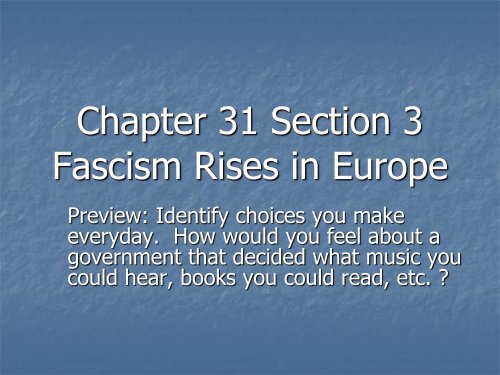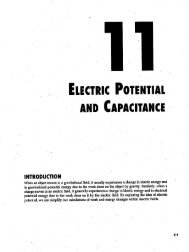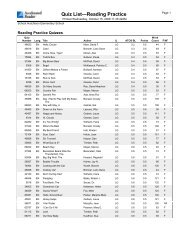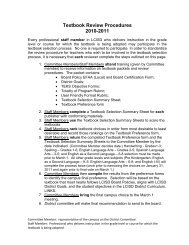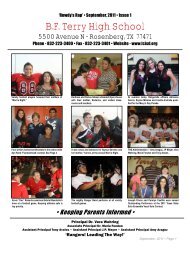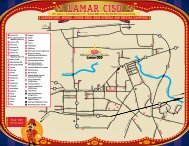Chapter 31 Section 3 Fascism Rises in Europe
Chapter 31 Section 3 Fascism Rises in Europe
Chapter 31 Section 3 Fascism Rises in Europe
Create successful ePaper yourself
Turn your PDF publications into a flip-book with our unique Google optimized e-Paper software.
<strong>Chapter</strong> <strong>31</strong> <strong>Section</strong> 3<br />
<strong>Fascism</strong> <strong>Rises</strong> <strong>in</strong> <strong>Europe</strong><br />
Preview: Identify choices you make<br />
everyday. How would you feel about a<br />
government that decided what music you<br />
could hear, books you could read, etc. ?
After WWI<br />
In the two decades follow<strong>in</strong>g World War I, a wave of<br />
economic and political crises swept the globe. While<br />
many people spent the 1920s try<strong>in</strong>g to cope with the<br />
uncerta<strong>in</strong>ties of the postwar world, by 1929 they<br />
suddenly faced a much greater problem.<br />
That year, the stock market <strong>in</strong> the United States<br />
crashed. Because so many war-torn nations had come to<br />
depend on f<strong>in</strong>ancial help from America, the stock<br />
market’s collapse triggered a worldwide economic<br />
depression that left millions around the globe jobless and<br />
hungry. In response to the turmoil, some nations turned<br />
to fascist dictators, who promised order and stability.<br />
Not content to merely rule a country, however, these<br />
dictators soon looked to conquer other lands
Fascist Beliefs and Policies<br />
• United States, Brita<strong>in</strong>, and France rema<strong>in</strong> democratic<br />
• Millions turn to a new and extreme system of government<br />
fascism loyalty to state and obedience to its leader<br />
• restore economy<br />
• punish those responsible for hard times<br />
• revive national pride<br />
• People who liked fascism were bothered by<br />
peace treaties of World War I and the Great Depression<br />
• Nationalism<br />
- wore uniforms<br />
- special salutes<br />
- mass rallies
Nations must struggle <strong>in</strong> order to stay strong<br />
Peaceful states were doomed to be conquered<br />
FASCISM<br />
•No clearly def<strong>in</strong>ed<br />
theory or program<br />
•believed each<br />
social class had<br />
own functions<br />
-support came from<br />
aristocrats, <strong>in</strong>dustrialists,<br />
veterans, and the lower<br />
middle class<br />
• Nationalists<br />
COMMUNISM<br />
•Had clear theory and<br />
program<br />
•dictatorship of<br />
work<strong>in</strong>g class<br />
(classless)<br />
• <strong>in</strong>ternationalists<br />
SIMILARITIES<br />
• dictators rule – one party<br />
• no <strong>in</strong>dividual rights<br />
• state was supreme<br />
• no democracy
Mussol<strong>in</strong>i Comes to Power <strong>in</strong> Italy<br />
In Italy, fascism ga<strong>in</strong>s followers because<br />
- 1919 Paris Peace Conference<br />
- Ris<strong>in</strong>g population<br />
- Inflation<br />
- Unemployment<br />
- Fear of Communist Revolution<br />
The Rise of Mussol<strong>in</strong>i<br />
Promises:<br />
- strong leadership<br />
- improvement <strong>in</strong> government<br />
- more powerful army
Founded the Fascist Party <strong>in</strong> 1919<br />
- not popular at first, but later ga<strong>in</strong>s support from the<br />
middle classes, the aristocracy and <strong>in</strong>dustrial leaders<br />
Fascists <strong>in</strong> black shirts attacked Communists and Socialists <strong>in</strong><br />
the streets. (Campaign of Terror)<br />
October 1922 30,000 Fascists march <strong>in</strong>to Rome<br />
- Demand Mussol<strong>in</strong>i to be <strong>in</strong> charge of the government<br />
- K<strong>in</strong>g Victor Emmanuel III let Mussol<strong>in</strong>i take over<br />
Il Duce “leader” (Mussol<strong>in</strong>i) Leadership<br />
- Demolishes democracy and other political parties<br />
- <strong>Fascism</strong>; similar to totalitarianism Radio stations &<br />
publications could only<br />
broadcast or publish<br />
Fascist work<br />
Secret police jailed<br />
“non-believers”<br />
-Italy is a role model for Fascists <strong>in</strong> other countries<br />
- Mussol<strong>in</strong>i never ga<strong>in</strong>ed as much power as Stal<strong>in</strong> or Hitler
Hitler Takes Control <strong>in</strong> Germany<br />
Germany underwent great changes after World War I. Like<br />
Mussol<strong>in</strong>i and Stal<strong>in</strong>, Germany’s Adolph Hitler rose to power<br />
dur<strong>in</strong>g a time of conflict and political <strong>in</strong>stability<br />
Hitler’s Early Career<br />
• Born Austria 1889<br />
• High school drop-out - failed artist<br />
• Served <strong>in</strong> German army World War I<br />
-awarded Iron Cross twice
The Rise of the Nazis<br />
After the war his job <strong>in</strong> the army was to keep tabs on<br />
different political parties.<br />
• Hitler already shows anti-Semitic views.<br />
• Soon jo<strong>in</strong>ed Nazi Party (National Socialist German<br />
Workers Party) (Nationalsozialistische Deutsche<br />
Arbeiterpartei) Nazism was the German form of fascism.<br />
desire to overturn Treaty of Versailles<br />
• and combat communism<br />
supported by middle and lower classes<br />
• Used Swastika as their symbol<br />
• Had a private militia called storm troopers or Brownshirts.<br />
Adolf Hitler’s skills as an organizer and speaker help him<br />
become der Führer (the leader) of the Nazi party
• Me<strong>in</strong> Kampf (My Struggle) was written while Hitler was <strong>in</strong> jail<br />
for failed attempt to over-throw government (served 5 years)<br />
-sets forth his anti-Semitic beliefs and his plans for conquest.<br />
Me<strong>in</strong> Kampf - The Plan of Action for the Nazis<br />
Blond, blue-eyed Germans (Aryans) were a “master race.<br />
Non-Aryan races-Jews, Slavs, Gypsies-were <strong>in</strong>ferior or<br />
subhuman.<br />
Vow to rega<strong>in</strong> Germany lands<br />
Germany overcrowded and need lebensraum, or liv<strong>in</strong>g space<br />
-achieve this by conquer<strong>in</strong>g countries <strong>in</strong> eastern <strong>Europe</strong> and<br />
Russia.<br />
Slowly becomes more popular with the German people, start<strong>in</strong>g<br />
<strong>in</strong> 1928.<br />
By 1932 half the German people seem to support Hitler and the<br />
Nazis.
How does Hitler do this?<br />
Knows who his audience is…<br />
Knows what issues are important to the<br />
audience, and addresses those issues<br />
Spoke with passion and devotion.<br />
Conv<strong>in</strong>ced the people of Germany that<br />
they, and their nation could be great once<br />
aga<strong>in</strong>, and he could do it.
Adolph Hitler (1889-1945) speak<strong>in</strong>g at the Nazi Party Congress<br />
<strong>in</strong> Nuremberg, 1935. The Depression that brought New Deal<br />
experimentation and social change <strong>in</strong> the U.S. had more serious<br />
political consequences <strong>in</strong> <strong>Europe</strong>. Germany, which was unable<br />
to make the reparations payments demanded by the Treaty of<br />
Versailles, suffered particularly severely from the worldwide<br />
economic downturn of the late 1920s. In the Germany of 1933,<br />
Adolph Hitler won a widespread follow<strong>in</strong>g for his National<br />
Socialist party by appeal<strong>in</strong>g to German national pride , and<br />
denounc<strong>in</strong>g the <strong>in</strong>ternal enemies, Jews and liberals, who he<br />
claimed were responsible for Germany's defeat and humiliation<br />
dur<strong>in</strong>g and after WWI. He repudiated the Treaty of Versailles,<br />
took Germany out of the League of Nations, and began<br />
rearm<strong>in</strong>g. In this speech, Hitler announced the exclusion of<br />
Jews from citizenship, the prohibition of marriage between<br />
Jews and "Aryans," and the adoption of the swastika as the<br />
emblem of Germany.
Hitler Becomes Chancellor<br />
Germany’s economic problems and fear of the Communist party<br />
help Hitler, who had revived the Nazi party <strong>in</strong> 1924, take power<br />
legally (President Paul von H<strong>in</strong>denburg named Hitler chancellor).<br />
- called for new election<br />
- fire destroyed Reichstag build<strong>in</strong>g and Communists blamed<br />
- Nazi and allies w<strong>in</strong> election by a skim majority<br />
Demanded passage of the Enabl<strong>in</strong>g Act (a 4 year dictatorship)<br />
and used his power to turn Germany <strong>in</strong>to a totalitarian state.<br />
Banned all other political parties and had opponents arrested and<br />
created the SS (Schutzstaffel) Protection squad<br />
-SS (Gestapo) wore black uniforms - loyal only to Hitler.
Hitler Controls Germany<br />
Began to crush opposition<br />
Many opponents arrested, others <strong>in</strong>timidated by Nazi thugs<br />
Cult of personality built up glorify<strong>in</strong>g Hitler as the Führer,<br />
“leader”<br />
Nazi youth organizations shaped m<strong>in</strong>ds of young Germany<br />
Hitler’s Economic Programs<br />
Began to rebuild German military<br />
Improved German economy<br />
Strict wage controls, massive government spend<strong>in</strong>g, reduced<br />
unemployment – from 6 millions to 2.6 millions<br />
Much spend<strong>in</strong>g for rearmament<br />
Also new public build<strong>in</strong>gs, roads
The Führer is Supreme<br />
Hitler wanted more than just<br />
economic and political power –<br />
he wanted control over every aspect of<br />
German life<br />
- turned the press, radio, literature,<br />
pa<strong>in</strong>t<strong>in</strong>g and film <strong>in</strong>to propaganda tools.<br />
Hitler Makes War on the Jews<br />
Nazis mounted more direct attacks on Jews (scapegoats)<br />
1933 passes laws to deprive Jews of most of their rights<br />
November 9 and 10, 1938, anti-Jewish riots across Germany,<br />
Austria<br />
Attack known as Kristallnacht, Night of Broken Glass<br />
- Nearly 100 Jews killed<br />
- Thousands of Jewish homes, bus<strong>in</strong>esses and places of<br />
worship damaged and destroyed
Nazi Anti-Semitism<br />
A key component of the Nazi system was strong anti-Semitic<br />
beliefs. Anti-Semitism is hostility toward or prejudice aga<strong>in</strong>st<br />
Jews. Hitler blamed Jews for many of German’s problems,<br />
<strong>in</strong>clud<strong>in</strong>g its defeat <strong>in</strong> World War I.<br />
Long History<br />
Anti-Semitism had long history <strong>in</strong> largely Christian <strong>Europe</strong><br />
Nazi anti-Semitism comb<strong>in</strong>ed this with false beliefs that Jews<br />
were separate race<br />
Comb<strong>in</strong>ed religious prejudice with hatred based on ancestry<br />
Laws Exclud<strong>in</strong>g Jews<br />
Many laws passed exclud<strong>in</strong>g Jews from ma<strong>in</strong>stream German life<br />
1935 Nuremberg Laws created separate legal status for Jews<br />
Elim<strong>in</strong>ated citizenship, civil and property rights<br />
Right to work was limited
In Hungary and Poland, the new democratic governments<br />
formed after World War I fall to dictators.<br />
•1919 Hungary Admiral Miklos Horthy<br />
•1926 Poland Marshal Joseph Pilsudski<br />
• + Yugoslavia, Albania, Bulgaria, and Romania<br />
k<strong>in</strong>gs suspend constitutions and turn to strongman rule.<br />
By 1935, Czechoslovakia is the only democracy <strong>in</strong> eastern <strong>Europe</strong>.<br />
• Democracy only <strong>in</strong> Brita<strong>in</strong>, France, Scand<strong>in</strong>avian countries<br />
• Many saw dictatorship as a way to make their government strong<br />
By Mid-1930’s<br />
2 major government types:<br />
democracy and totalitarianism
Method of tak<strong>in</strong>g power<br />
Style of leadership<br />
Handl<strong>in</strong>g of economic<br />
crisis<br />
Goals<br />
Look at the graphic to help organize your<br />
thoughts. Compare Mussol<strong>in</strong>i and Hitler by<br />
us<strong>in</strong>g the four categories listed below.<br />
Hitler Mussol<strong>in</strong>i<br />
Appo<strong>in</strong>ted chancellor<br />
Appo<strong>in</strong>ted by<br />
k<strong>in</strong>g<br />
Dictator Dictator<br />
Revived economy Took control of economy<br />
Sought to rega<strong>in</strong> lost<br />
lands and take over<br />
more<br />
Wanted Italy to return<br />
to its ancient greatness
<strong>Fascism</strong> <strong>in</strong> <strong>Europe</strong><br />
Benito Mussol<strong>in</strong>i Adolf Hitler<br />
• Invaded<br />
Ethiopia <strong>in</strong><br />
1935.<br />
• Italian<br />
• Used economic unrest and fears<br />
of communism to ga<strong>in</strong> support.<br />
• German<br />
• Anger over the • Believed<br />
Versailles treaty Germans were<br />
a superior<br />
• Formed a totalitarian<br />
“Aryan” race.<br />
government<br />
• Blamed the Jews<br />
for Germany’s<br />
problems.<br />
• Used nationalism to<br />
ga<strong>in</strong> support.


